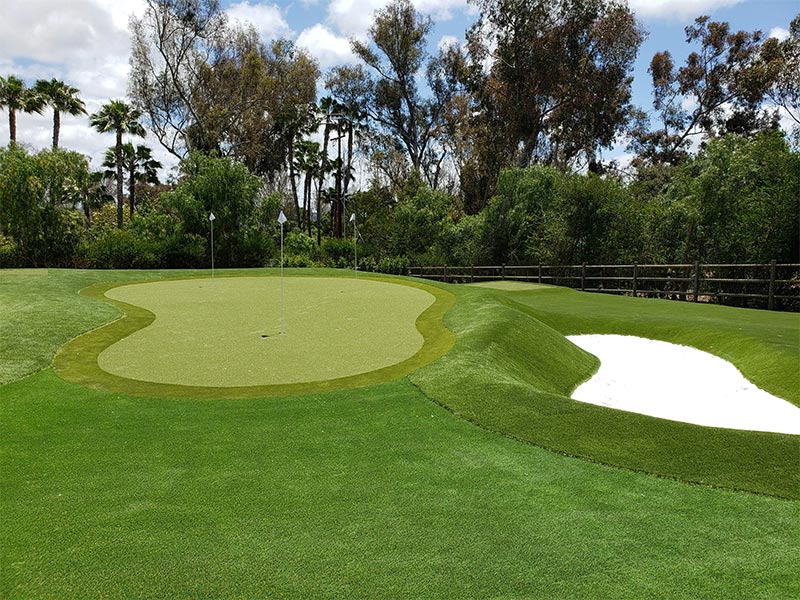The valley turf is the stage where golfers showcase their precision and finesse, making it one of the most critical components of the game. Achieving a flawless valley turf surface is essential for providing players with a consistent and true roll, ensuring a fair and enjoyable golfing experience. Behind every immaculate valley turf lies a set of secrets and techniques that contribute to its perfection. Let’s delve into the secrets of creating and maintaining a flawless valley turf surface.
Proper Drainage: Proper drainage is crucial for maintaining a flawless valley turf surface. Excess water can lead to soggy and uneven turf, affecting ball roll and playability. Installing a comprehensive drainage system, including pipes, gravel, and sand layers, ensures efficient water removal and prevents waterlogged greens.
Quality Turf Selection: The type of turf used on the valley turf significantly impacts its performance and aesthetics. Selecting high-quality turf varieties specifically designed for valley turfs is essential for achieving a flawless surface. Creeping bentgrass and Bermuda grass are popular choices due to their fine texture, resilience, and ability to withstand frequent mowing.
Precision Mowing: Mowing is a critical aspect of valley turf maintenance that requires precision and attention to detail. Regular and consistent mowing at the correct height ensures a smooth and uniform surface, promoting optimal ball roll and playability. Mowing patterns should be varied periodically to prevent grain buildup and maintain turf health.
Aeration and Topdressing: Aeration and topdressing are essential practices for maintaining a healthy and resilient valley turf surface. Core aeration relieves soil compaction, improves root growth, and enhances water infiltration. Topdressing with sand or compost replenishes soil nutrients, levels surface irregularities, and promotes a dense and uniform turf canopy.
Optimal Irrigation: Proper irrigation is vital for maintaining turf health and promoting a flawless valley turf surface. Irrigation systems should be calibrated to deliver water uniformly and efficiently, avoiding overwatering or underwatering. Moisture levels should be monitored regularly to prevent drought stress or waterlogging, which can compromise turf quality.
Pest and Disease Management: Pest and disease management are essential components of valley turf maintenance to prevent damage and ensure turf health. Regular monitoring for pests such as insects and rodents, as well as diseases like fungal infections, allows for early detection and intervention. Integrated pest management strategies, including cultural practices and selective pesticide applications, help minimize damage while preserving environmental integrity.
Strategic Fertilization: Proper fertilization is essential for providing turf with essential nutrients and promoting healthy growth. A balanced fertilization program tailored to the specific needs of valley turf turf ensures optimal nutrient uptake and minimizes the risk of nutrient deficiencies or excesses. Slow-release fertilizers and organic amendments are preferred for promoting sustained growth and minimizing environmental impact.
Attention to Detail: Attention to detail is paramount in maintaining a flawless valley turf surface. Regular grooming, edging, and grooming remove debris, weeds, and unwanted growth, enhancing turf aesthetics and playability. Additionally, meticulous grooming of the green’s perimeter and surrounding areas creates a seamless transition between the putting surface and the rest of the course.
In conclusion, achieving a flawless valley turf surface requires a combination of careful planning, diligent maintenance, and attention to detail. By implementing these secrets and techniques, golf course managers and groundskeepers can create valley turfs that provide golfers with a consistent, true roll and an exceptional playing experience.

